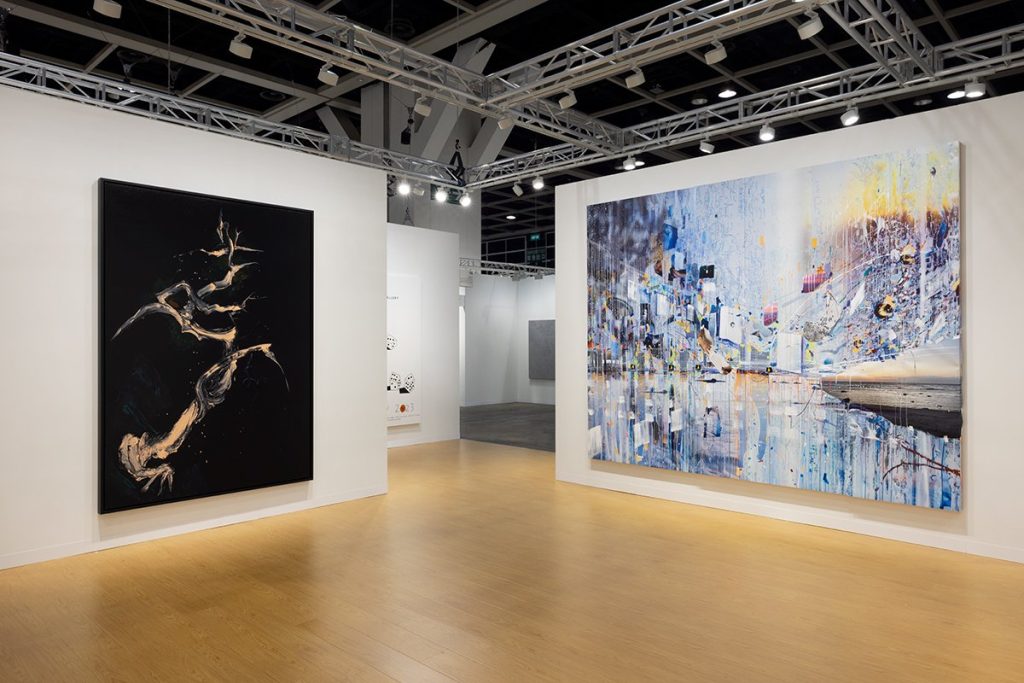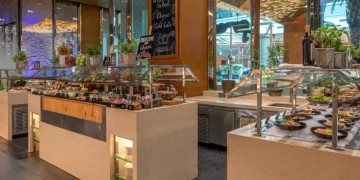Introduction: The Allure of Exclusive Art Exhibitions in Elite Circles
The world of high-end art exhibitions has always been defined by exclusivity. These events, often held in glittering global cities, are much more than just an opportunity to view stunning works of art—they are places where culture, wealth, and influence converge. Whether held in the prestigious halls of Paris, Venice, or Basel, these exhibitions provide a glimpse into a world that is often hidden from the public eye. Invitations to attend such events are highly coveted, as they not only offer access to exclusive art collections, but also serve as social gathering points for the world’s elite.
For centuries, the art world has functioned as a magnet for the wealthy, and art exhibitions continue to play a significant role in this dynamic. For some, visiting these exhibitions is about more than just admiring masterpieces; it’s about cementing one’s place within a rarified circle of collectors, patrons, and celebrities. Art exhibitions have become a cultural event in their own right, where the lines between art, luxury, and social status are often blurred.
In this article, we will explore the most prestigious art exhibitions that define the art world’s elite circles, delve into the curatorial process that makes these shows so exclusive, examine the role of celebrity art collectors, and consider the future of these exhibitions as the art world embraces new technologies like digital art and NFTs.
Top Art Shows of the Year: Exploring Events like Art Basel, Frieze, and the Venice Biennale
Every year, art lovers and collectors eagerly anticipate a select few prestigious exhibitions that are recognized as the gold standard of the art world. These events bring together some of the finest contemporary artists, collectors, galleries, and curators to showcase the latest developments in the art scene. Let’s take a closer look at some of the most prominent art exhibitions that dominate the calendar:
1. Art Basel
Held annually in Basel, Switzerland, Art Basel is widely regarded as the world’s leading contemporary art fair. Founded in 1970, this exhibition draws artists, collectors, curators, and dealers from around the globe. Art Basel has become a key destination for anyone involved in the contemporary art world, and it often sets the trends for the coming year in terms of the types of works that are exhibited and collected. The event features everything from paintings, sculptures, and photography to cutting-edge installations and digital art, providing a comprehensive look at the modern art landscape.
In addition to its physical presence in Basel, Art Basel has expanded to include other events in Miami Beach and Hong Kong, further solidifying its global reach. For collectors and curators, Art Basel is an essential event where multi-million dollar sales often take place, and some of the world’s most valuable works of contemporary art are presented to the public.
2. Frieze Art Fair
Held annually in London, New York, and Los Angeles, the Frieze Art Fair is another cornerstone of the global art calendar. Founded in 2003, Frieze has quickly established itself as one of the most important and influential contemporary art fairs in the world. The event is known for its focus on contemporary and modern art, as well as its dedication to showcasing emerging artists alongside established masters.
Frieze is unique in that it combines an art fair with an art festival, offering a dynamic mix of exhibitions, performances, panel discussions, and talks. Frieze London, in particular, is often seen as one of the key art events of the year, attracting a global audience of collectors, curators, and high-profile art lovers.
3. Venice Biennale
One of the oldest and most prestigious art exhibitions in the world, the Venice Biennale dates back to 1895. Held every two years in the stunning city of Venice, Italy, the Biennale is a global platform for contemporary art. The event features national pavilions, each representing a country and showcasing a curated selection of the nation’s best contemporary artists.
In addition to national pavilions, the Venice Biennale includes a main exhibition curated by a prominent art curator, bringing together some of the most innovative works in the art world. The event is highly regarded for its cultural significance, and it often serves as a launchpad for new artistic trends and movements. Attending the Venice Biennale is a cultural statement, as it is both a global gathering of art world influencers and an exploration of the world’s most forward-thinking artistic expressions.

Curating the Unseen: How Private Collectors and Galleries Shape Exhibition Lineups
Behind the scenes of these prestigious art exhibitions is a world of curatorial decisions that dictate which works make it into the show and how they are presented to the public. Curating is an art form in itself, and the process of selecting artists and works for these elite exhibitions is as intricate and selective as the art itself.
1. Private Collectors: Shaping the Art Market
Private collectors play a crucial role in shaping the exhibition lineups of high-end art fairs and exhibitions. These individuals are often responsible for amassing private collections that include some of the most important works of contemporary art. Many of the world’s top collectors, such as François Pinault, Bernard Arnault, and Eli Broad, are deeply involved in curatorial decisions, either by lending their works to museums or commissioning exhibitions of their private collections.
Their collections are often displayed in major exhibitions, which provides a significant platform for the artists they support. These collectors have the power to shape trends in the art market, and their involvement in high-profile exhibitions ensures that the works they champion receive global attention. Many private collectors also partner with galleries to exhibit their collections, providing a bridge between private and public spheres.
2. Art Galleries: The Gatekeepers of Artistic Exposure
Art galleries are integral to the exhibition process. Top-tier galleries curate exhibitions featuring their stable of artists and work with prestigious events to showcase those artists in the best possible light. A gallery’s reputation is built on the quality of the artists it represents, and an invitation to exhibit at major art fairs is an important step in an artist’s career.
For galleries, participation in high-profile art fairs like Art Basel or Frieze is a prestigious opportunity that often results in substantial sales and international exposure. These galleries play a critical role in shaping what the public sees and experiences in the world of contemporary art, and their involvement in exhibitions helps determine which artists are deemed worthy of the elite spotlight.
Celebrity Art Collectors: The Role of High-Profile Figures in the Art World
The influence of celebrity art collectors cannot be overstated. Over the past few decades, high-profile figures from the worlds of entertainment, fashion, and sports have begun to make their mark on the art world. Their involvement not only brings increased visibility to certain artists but also helps elevate the status of art exhibitions and events.
Celebrities like Leonardo DiCaprio, Jay-Z, Beyoncé, and even the late David Bowie have become known for their private art collections, which are often as valuable as they are influential. For instance, Jay-Z and Beyoncé’s art collection includes works by artists such as Basquiat, Warhol, and Koons, and their patronage has helped to shine a spotlight on contemporary African American artists in particular. DiCaprio’s collection, which includes works by artists like Picasso and Monet, has made waves in both the art world and the environmental community.
The presence of celebrity collectors in the art world also boosts the appeal of exhibitions. Their involvement in high-profile auctions, gallery openings, and art events adds a layer of glamour and exclusivity that draws attention from media outlets and fans alike. The celebrities’ influence has proven essential in expanding the art world’s visibility and appeal to a wider audience, making these exhibitions even more prestigious.
The Future of Art Exhibitions: Digital Art, NFTs, and Innovative Formats
As the art world evolves, so too do the formats and mediums used to present art. The rise of digital art, virtual exhibitions, and NFTs (non-fungible tokens) is transforming the way art is created, bought, and experienced.
1. Digital Art and Virtual Exhibitions
In recent years, digital art has become one of the most exciting and fast-growing sectors within the art world. Virtual reality, augmented reality, and immersive art experiences have opened up new ways for artists to express themselves and for collectors to engage with art. The pandemic accelerated the shift to digital art and virtual exhibitions, with events like the Frieze Art Fair adapting to online platforms and offering virtual gallery tours.
While digital art has its critics, it has undeniable potential to redefine the exhibition space. By making art more accessible to global audiences, these new formats could democratize the art world and allow for greater interaction with works that were previously confined to galleries and museums.
2. NFTs: Redefining Ownership and Value
NFTs have sparked a revolution in the art world. These digital assets, which are authenticated by blockchain technology, have allowed artists to monetize their works in ways that were previously impossible. NFTs have attracted high-profile collectors and tech innovators like Beeple, whose NFT artwork “Everydays: The First 5000 Days” sold for an astounding $69 million at a Christie’s auction.
The growing popularity of NFTs has prompted art fairs and exhibitions to incorporate digital art and virtual platforms into their lineups. As NFTs gain traction, they will likely become a more prominent part of major art events, blurring the lines between traditional art forms and emerging digital technologies.
Conclusion: Why Attending These Exhibitions is More Than Just Art—It’s a Cultural Statement
Attending an exclusive art exhibition is not merely about viewing art—it’s about entering a world that defines culture, wealth, and taste. The prestige of these events goes beyond the artworks on display; it’s about being part of a select community that values artistry, innovation, and social influence. These exhibitions provide a stage for the world’s
most celebrated artists, collectors, and curators to come together and showcase their vision for the future of art.
As the art world continues to evolve, these prestigious exhibitions will remain a cornerstone of cultural and social significance. For those fortunate enough to attend, they offer an unparalleled opportunity to experience not only extraordinary works of art but also to participate in the ongoing dialogue between art, culture, and exclusivity.
















































